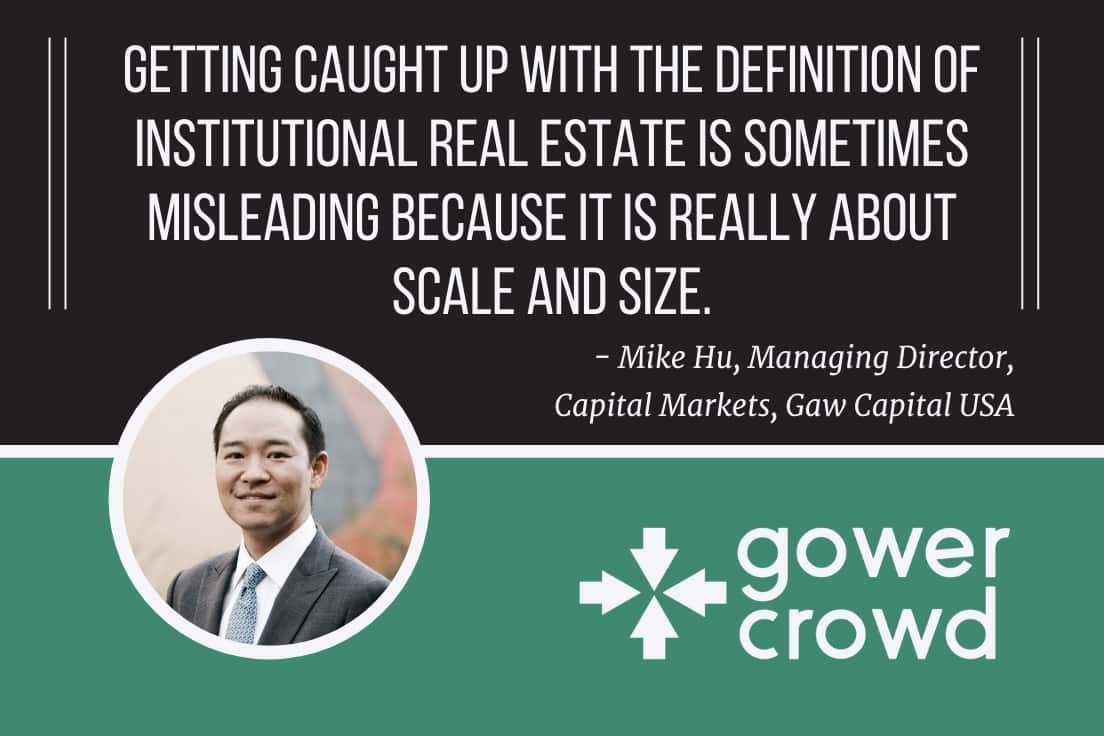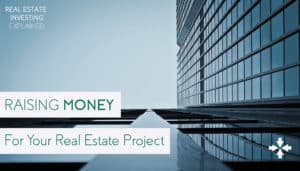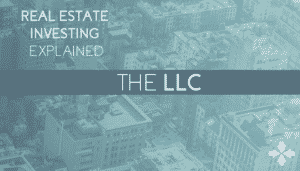FREE TRAINING
What is Real Estate Crowdfunding?
Learn how to build wealth and earn passive income in real estate while someone else does all the work.
Understanding Institutional Real Estate
This article is based on a conversation I had with Mike Hu, Managing Director at Gaw Capital USA.
A lot of people like to use the term “institutional real estate” in one form or another. They talk about “institutional-quality” assets, “institutional investors,” “institutional sponsors” and the like. Given how loosely the word is used, it’s worth a detailed look at what institutional actually means.
This article is based on a recent conversation with Mike Hu, who is the head of U.S. Capital Markets for Gaw Capital, USA, a major institutional firm whose latest fund closed at $2.2 billion. Mike spends his day-to-day working on the ground with institutional investors of all kinds. He shares his best insight with us as to how we should be thinking about institutional investors, what they’re looking for in deals, what classifies as institutional-quality real estate and more.
So, without further ado, let’s jump right in.
What is institutional-quality real estate?
People tend to think of institutional real estate as being Class A properties, usually in top tier markets. Think of your office buildings in downtown Manhattan or San Francisco. These properties tend to be expensive, exclusive, and the attract attention of international investors.
Yet institutional-quality real estate is much broader than these trophy assets. In addition to office, institutional-quality real estate also encompasses retail, multifamily, and industrial/logistics. These are the four major institutional “food groups,” if you will.
Increasingly, however, institutional investors are also buying alternative asset types such as data centers, self-storage facilities, student housing and seniors housing.
Get access to our FREE weekly newsletter exclusively covering the latest updates from the real estate crowdfunding world
What are the characteristics of institutional-quality real estate?
It is hard to generalize when discussing institutional-quality real estate, especially because not every investor invests the same way. Some investors will have no problem investing in any of the asset types mentioned above, whereas others will only buy the big, shiny office building located downtown in a gateway city.
Instead, it’s worth thinking about institutional-quality real estate along a risk-return spectrum. The lowest-risk, lowest return assets are core assets such as Class A properties. In the middle of the spectrum is value-add real estate. Along the farther end of the spectrum is opportunistic real estate, which is higher-risk but can provide higher returns. Institutional investors will buy properties along this spectrum based on their individual risk tolerances and portfolio objectives.
Another way to think about institutional-quality real estate is to think about it in terms of size and scale. For example, a single-family home would not be considered an institutional-quality product—but a portfolio of 5,000 single-family rental homes would be. The defining difference between traditional investment property and institutional-quality real estate then, is really scale.
What is an institutional investor?
There are many different types of institutional investors, ranging from sovereign wealth funds to global pension funds, from endowments and foundations to large family offices. We’ll discuss the different types of institutional investors in more detail below.
Regardless of the type of institutional investor, there are a few characteristics that all institutional investors have in common.
First, institutional investors tend to have very large sums of money to invest. On the lower end of the spectrum, a family office might look to invest $20 million in institutional-quality real estate. On the higher end of the spectrum, a sovereign wealth fund might be looking to invest $100 million at a minimum. This inherently steers institutional investors to larger-scale deals, whether a single Class A asset in a prime location or a portfolio of smaller assets that combined, provides the investor with scale.
A second characteristic of institutional investors is that they’re sophisticated. By sophisticated, we mean that these investors have a very strong understanding of the risk-return spectrum. They are keenly aware of various investment opportunities and know how much leverage they’re willing to have in any given deal. Most institutional investors have adept teams either in-house or contracted professional teams, who specialize in various asset classes, such as commercial real estate.
What are the different types of institutional investors?
As noted above, there are a few different types of institutional investors. These include: sovereign wealth funds, endowments and foundations, global pension funds, and large family offices.
-
- Sovereign wealth funds: A sovereign wealth fund is generally a fund that invests on behalf of a state or county. They invest in a range of products from real estate to private equity to infrastructure and equities.
-
- Endowments and foundations: These are some of the most common institutional investors and include the investments on behalf of universities and large nonprofits. Endowments and foundations tend to be very sophisticated investors.
-
- Global pension funds: Global pension funds are similar to sovereign wealth funds and endowments; except they are investing large sums of money on behalf of private companies. Global pension funds, as their name implies, can be located all over the world, from U.S. to Europe, to Asia or the Middle East.
- Large family offices: A family office is a privately held company that handles investments and wealth management on behalf of extremely wealthy families, usually with $100 million or more in assets combined. Family offices may have more or less experienced real estate investment teams compared to other institutional investors, and generally speaking, have slightly less capital to invest into individual deals.
The staff who work for these firms are known as portfolio managers. They are responsible for allocating capital and/or managing a direct portfolio if the institutional investor has purchased real estate directly. Some institutional investors opt, instead, to invest in funds rather than owning assets outright.
What is an “892 investor”?
Section 892 of the U.S. tax code provide a special tax benefit that can be applied to sovereign wealth fund investors. These are accordingly referred to as “892 investors”. In short, if the investor owns less than 50% of a real estate deal, they may be wholly tax exempt – a huge cost savings that serves as an incentive for international investors to purchase U.S. real estate as long as they do not own a majority stake of the equity in the deal.
Given that so many institutional investors are looking to spend at least $100 million per transaction, it is no wonder, then, that they are drawn to expensive, Class A trophy properties. They need to invest in very expensive assets in order to deploy this amount of capital without owning a majority share of the equity.
What do institutional investors look for in a deal?
Institutional investors can be motivated by a number of different things, ranging from security to yield, even prestige. The largest investors, particularly foreign investors, tend to be focused on lower-risk deals in gateway cities. They’re much more likely to buy a stabilized office building in New York, Chicago or Los Angeles than they are an asset in a place like Kansas City.
For these investors, security and prestige certainly matters.
Family offices, meanwhile, might be more willing to invest in value-add or alternative assets as a way of maximizing yield. Again, it depends on the objectives of the individual investor.
Institutional investors also pay a great deal of attention to the sponsor of a deal. Given how much money they’re investing, they’ll typically run an extensive due diligence process on the sponsor and/or the fund manager. This process ranges generally entails several in-person and on-site meetings prior to signing up a deal. Many institutional investors, especially pension funds, will work with a third-party consulting firm to assist with their due diligence (both investment-level DD and operational DD). They’ll want to understand things like capital distributions, the risk and compliance protocols in place, etc. “…the less sexy side of the business,” explains Mike Hu.
What is the process like for working with an institutional investor?
As noted above, most institutional investors spend a great deal of time and energy vetting a deal prior to investing. Based on the merits of the deal, sponsor and fund manager, the institutional investor will typically have to go through an investment committee to obtain final approval. Once the deal has been approved, there’s a follow-on process of legal documentation to determine things like how the partnership agreement will be structured.
Some, but certainly not all, institutional investors lean heavily on consultants for support. Many will not make an investment without consultant approval. Consultants, ranging from research teams to accountants and attorneys, are used to augment the investors’ own due diligence. Consultants may be used for a limited portion of the DD process where the investment team needs more specialized expertise. That said, many institutional investors run the entire underwriting and DD process in-house without the support of any consultants. It really depends on the bandwidth and capacity of the institutional investor.
Attorneys are always involved in both sides of the transaction.
Some deals have more “hair” on them than others. For example, it may be the case that an institutional investor cannot legally invest in a certain product type or geography, so the deal must include a carve-out to accommodate that—or not, the general partner may decide to decline the carve-out and risk losing the investor. In any event, these are the types of nuances that lawyers help the parties work through.
What do institutional investors look for in a fund manager?
Fund managers, like Mike Hu and the team at Gaw Capital, are there to act as a fiduciary for their investors. They might assist with sourcing and underwriting deals and will always look to ensure that an opportunity Is aligned with a fund’s investment strategy.
For institutional investors, it is important that fund managers and the sponsors with whom they work have a proven track record. They will evaluate the deals the GP has done before, the performance of those deals, and projected returns for deals that have not yet sold. Institutional investors want to understand the good, the bad, and the ugly – including any deals that the sponsor has had that have gone sideways. This step of the due diligence process often includes site visits and may include calling the sponsor’s references.
The “get to know you” process takes time. It can take anywhere from two months to ten years for a GP to close a deal with an institutional investor.
Several factors, such as the economic environment, will influence an institutional investor’s willingness to partner with a GP at any given time.
What are some of the risks associated with institutional investing?
Institutional investing carries risk for both the GP and the institutional investor.
From the GP’s perspective, institutional investors tend to be oriented toward long-term investments. They have patient capital, which is good. However, sometimes institutional investors are forced into making short-term decisions that negatively impact the GP. For example, when the equity markets were in a free fall in March 2020, it could have decreased an investors’ equity portfolio, thereby increasing the value of their real estate portfolio.
This can create imbalance within the overall portfolio makeup, which creates a problem for institutional investors who are obligated to stay within certain thresholds. The investor may be forced to sell certain assets during that time—which may be the wrong time to sell. This can impact the GP because it forces the GP into selling assets they wouldn’t otherwise want to at that time, given the economic conditions outside of their control.
Meanwhile, institutional investors face their own constraints. They are not always as nimble as other investors. Given the large sums of money they tend to invest, there’s usually more bureaucracy to work through in order to obtain necessary approvals. This is especially true for sovereign wealth funds and global pension funds; endowments and family offices tend to have slightly more flexibility and can move faster.
Lastly, Hu explains, institutional investors are constrained to the upper echelon of deals. They will not look at smaller scale investments. It takes the institutional investor just as much time and effort to make a $5-10 million deal as it does a $100 million deal, so they’ll usually opt only for the largest of deals when given the opportunity. This limits their pool of investments and the real estate sponsors who they’re able to work with.

CONCLUSION
There’s a lot to understand about how institutional investors operate, even more so about the institutional-quality assets they invest in. As we learned from Mike Hu, you don’t want to get too caught up in the nomenclature. The definition of what “institutional” meansfits within a tight framework of criteria so be sure that when you are looking at an “institutional” quality deal, sponsor, or opportunity that it really fits the box it’s being placed in.
If you liked this article and would like to learn more about real estate investing, check out some of the resources below:
Newbie
If you want to build your wealth and earn passive income from real estate investing and are looking at deals on marketplace platforms or through developers online, then I recommend you start by the 8 Key Financial terms so you can understand every deal you look at.
The 8 Financial Keys are not only a great way to get started, they are also essential to understanding how you’ll make money in any real estate deal.
You’ll learn the most important financial concepts you need to know in real estate investing that apply to every type of real estate no matter the asset class (office, industrial, residential, hospitality, retail).
Intermediate Investor
If you’ve got some online real estate investments under your belt already and are beginning to receive passive income checks each month, or have been paid off with profit – or (hopefully not) are finding that some deals are not quite panning out the way you expected, then check out this page for a wealth of free resources.
Here I cover everything from beginner all the way to very advanced real estate concepts.
You’ll find podcasts with developers, researchers, professors and other industry experts, detailed articles, and lots of videos, both short and long that are all easily searchable and totally free.
Advanced Investors
I am not shy about being straightforward about real estate investing; it is exciting, lucrative, and can help you build wealth and income as part of your investment portfolio, but it is not without its risks.
As an advanced investor you know this already, so I’ve put together a webinar for you that guides you through one of the most important components of real estate investing: Real Estate Contracts – reading between the lines.
This is advanced learning and based off conversations I had with three of the top real estate attorneys in the country, combined with my own personal experience. Access it here; it could be the most important webcast you watch all year.





